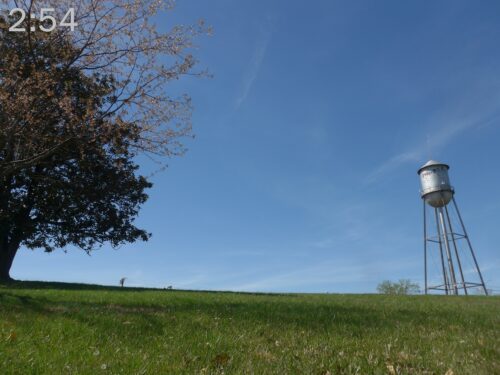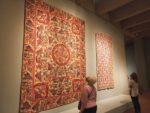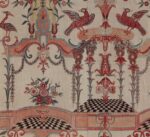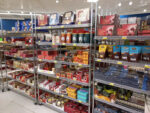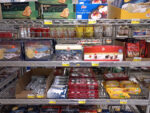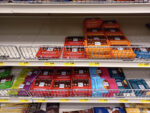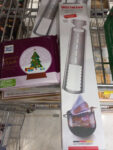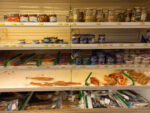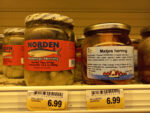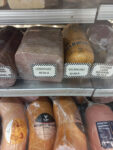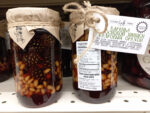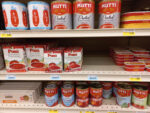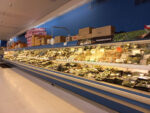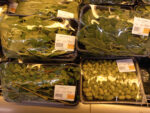Photos of the uncanny light and color in the landscape during the solar eclipse which are almost as exciting as the eclipse itself. I can’t find other photos like these anywhere online! (sun photos are at the bottom). Colors become dull, washed-out, greyish or reddish. At times everything looks flat and two-dimensional. Sometimes it looks like an old faded photograph or that thing on flat screen TVs nowadays where they make everything you watch look like a cheap badly-lit 80s daytime soap opera (it’s called “Motion Smoothing” but most people call it “soap-opera effect” and everyone hates it; most TVs have a hard-to-find setting that lets you switch it off ). It would take a very expensive camera and lots of experience to really capture the colors it but you can get the idea here.
The extraordinary story of India’s 1,500 year mastery of the global trade in printed fabrics
For two millienia, India was the only country that had figured out how to dye or print in color in cotton, because it was extremely difficult before the modern era, involving complicated methods and obscure plant extracts. Pliny marveled over it in 70 A.D. and England didn’t learn the methods until the mid-1700s . So India was more or less the sole supplier of printed cottons, or chintz – a Hindi word – not just to Europe but also to places such as Japan, southeast Asia, and the middle East, in patterns following the local traditions. An exhibition at the St. Louis Art Museum entitled Global Threads: The Art and Fashion of Indian Chintz tells the story.
Click to enlarge
Continue reading “The extraordinary story of India’s 1,500 year mastery of the global trade in printed fabrics”
Global Market!
Colossal world supermarket – Poland, Germany, Czechia, Italy Russia, Turkey, UK, India, Korea, Japan, China, Arabic countries
This is just a part of the German department with as much Christmas stuff as in a German supermarket: spice cookies, stollen, marzipan, chocolates with liqueur, Ritter brand chocolate bars including limited-edition Christmas flavor (Lebkuchen, Zimtsterne, Stollen, Marzipan, Pralinen mit Weinbrände und Liköre, Ritter Sport Weihnachtssorte). Even a special tongs for melting rum-soaked sugar into a mulled Christmas wine punch (Zuckerzange für Feuerzangenbowle). Nonchristmas German food includes Leberkäse (similar to bologna), Rollmops, Matjes (both are herring), Spätzle (noodles).
The brands of Italian tomatoes you see in every German supermarket and various Russian specialities
This is the exotic produce aisle where more or less nothing you see can be found in an ordinary supermarket, such as the sweet potato leaf, drumstick leaves, amaranth leaves, fresh chick peas and jackfruit in the last two photos.
Protestors in St. Louis, 1920-30
These are photos of protests in St. Louis for racial equality (1930) and voting rights for women (1920) from a spectacular exhibition of panoramas at the Missouri History Museum.
Incredibly, the roughly 5-by-30 foot photos are enlargments of the originals which are only about 8 by 50 inches and were also on display – yet they’re sharp enough that you can see individual hairs and the texture of the clothing fabrics. I believe they don’t make cameras any more that can obtain such high resolution except for the most sophisticated professional equipment used in science, the military or aerial photos on Google Maps.
Click on photos to enlarge

St. Louis – notable houses
These are just some miscellaneous little houses in St. Louis that I wanted a friend to see. I didn’t have many photos of my own so some are from Google Street View.
